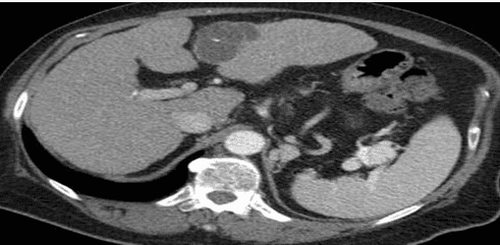This is an automatically translated article.
The article was written by Master - Doctor Mai Vien Phuong - Head of Gastrointestinal Endoscopy Unit - Department of Medical Examination and Internal Medicine - Vinmec Central Park International General Hospital.The term “mixed endocrine neoplasm” (MANEC) was coined by the World Health Organization in 2010 to refer to a type of cancer with a dual differentiation between adenocarcinoma and neuroendocrine carcinoma, each components represent at least 30% of tumors. Prior to 2010, this tumor was reported as a mixed tumor.
1. Overview
Mixed tumors of the colon and rectum consisting of a combination of epithelial and endocrine factors with the potential to be benign or malignant are rare neoplasms. These tumors can appear anywhere in the gastrointestinal tract and are often diagnosed incidentally. Although they are a well-documented entity in the pancreas, where mixed exocrine-endocrine tumors have been known for some time, accurate recognition and diagnosis of these tumors in colon and rectum remains a challenge to date.2. The birth of the term “mixed endothelial tumor”
Although colorectal cancer is the second most common cancer, mixed tumors consisting of epithelial and endocrine factors are rare, accounting for only about 1%-2% of all malignancies. colorectal properties in the reported literature. The first report of the presence of a gastrointestinal tumor with a neuroendocrine component and an exocrine component in the same tumor was reported by Cordier in 1924.Initial reports:
Initial reports of such cases were defined by very broad descriptions and often led to confusion. In 1987, Lewin realized that carcinoid tumors encompass a broader histological spectrum of mixed endocrine-glandular tumors. He was the first to propose a methodical classification of the "mixed" tumors of endothelial cell carcinoma, dividing this entity into three broad categories as mixed, collision, and amphicrine tumors. .
Literature reports over the next 10 years show great inconsistency in published data on tumors with multiple lesion types referred to as “mixed tumours” because there is no clear definition of each. composition as well as established criteria for inclusion in this name. Capella et al attempted to group different clinical pathological entities into prognostic classes to include high-grade, low-grade, moderate-grade, and malignant endocrine-exocrine tumors. high levels of the gastrointestinal tract.
The term “mixed neuroendocrine adenocarcinomas” (MANECs):
In 2000, WHO expanded the classification of endocrine cancers to include mixed endocrine-exocrine cancers, with the definition of each component represents at least 30% of the tumor. The gray area between pure neuroendocrine and non-neuroendocrine tumors was further explored by Volante et al with comments on proposed concepts and classifications.
In 2010, mixed tumors from the gastrointestinal tract - pancreas containing neuroendocrine and exocrine components, each present in at least 30% of the tumor volume and as malignancy were classified by WHO is a separate entity, known as “Mixed adenoneuroendocrine carcinomas” (MANECs).
Then, in 2012, La Rosa updated the classification of these entities to:
(1) MANEC: As high- and intermediate-grade malignancies. (2): Mixed adenoma-type well-differentiated neuroendocrine tumors (MANETs) are low-grade malignancies for lesions, including low-grade neuroendocrine tumors in adenomas without neonatal transformation. However, MANET was not specifically classified in WHO 2010.

Ung thư biểu mô tuyến nội tiết thần kinh hỗn hợp
In 2016, La Rosa et al. also proposed a unified concept of mixed non-neuroendocrine tumors neuroma for this heterogeneous group of tumours and grouping them according to the malignancy of each tumor component resulted in a three-tier classification of high-, intermediate-, and low-grade malignancies.
This was approved by WHO in 2017 with the reclassification of MANEC as mixed neuroendocrine neoplasms (MiNEN) to include histological variants such as squamous or sarcomatoid phenotypes. The term “carcinoma” has been replaced by the term “cancer” to allow inclusion of recognized low-grade malignancies.
Classification of neuroendocrine components based on histological grade and proliferation index into neuroendocrine tumors NET1, NET2, NET3 and neuroendocrine carcinoma (NEC) based on morphology , mitochondria and Ki67 proliferation. WHO describes MiNEN as being primarily made of a poorly differentiated NEC component, along with an adenocarcinoma component.
Furthermore, they say that MiNEN including low-level NET component like MANETs is extremely rare. These mixed tumors can display different percentages of each component, theoretically between 1% and 99%. With the use of immunohistochemical stains. Similar to that in MANEC, current recommendations continue to state that MiNEN must also include at least 30% of both neuroendocrine and epithelial components.
However, it is increasingly recognized that all high-grade malignancies should be reported even if it accounts for less than 30%. The term MiNEN has also been adopted by the French ENTS group. Recently, the International Agency for Research on Cancer and the WHO expert panel proposed a common classification framework for all neuroendocrine tumors of the gastrointestinal tract and have expanded the use of the term. MiNEN term for all tumors that meet the diagnostic criteria for a possible combination of neuroendocrine and non-neuroendocrine factors for any site in the pancreatic gastrointestinal tract.
Please follow the website: Vinmec.com regularly to update many other useful information.
Please dial HOTLINE for more information or register for an appointment HERE. Download MyVinmec app to make appointments faster and to manage your bookings easily.
References: Kanthan R, Tharmaradinam S, Asif T, Ahmed S, Kanthan SC. Mixed epithelial endocrine neoplasms of the colon and rectum – An evolution over time: A systematic review. World J Gastroenterol 2020; 26(34): 5181-5206 [PMID: 32982118 DOI: 10.3748/wjg.v26.i34.5181]












